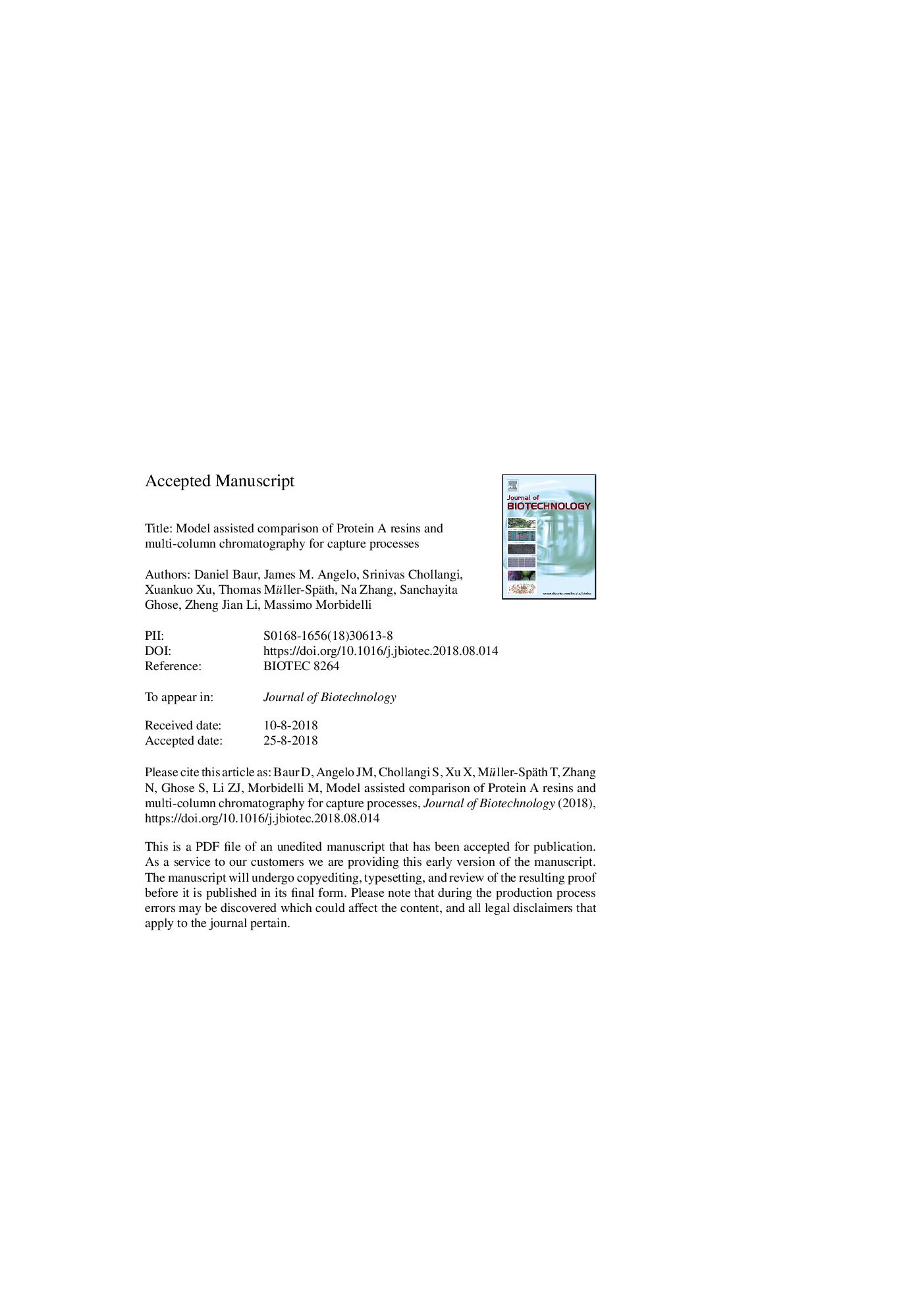| کد مقاله | کد نشریه | سال انتشار | مقاله انگلیسی | نسخه تمام متن |
|---|---|---|---|---|
| 10138920 | 1645924 | 2018 | 24 صفحه PDF | دانلود رایگان |
عنوان انگلیسی مقاله ISI
Model assisted comparison of Protein A resins and multi-column chromatography for capture processes
دانلود مقاله + سفارش ترجمه
دانلود مقاله ISI انگلیسی
رایگان برای ایرانیان
کلمات کلیدی
موضوعات مرتبط
مهندسی و علوم پایه
مهندسی شیمی
بیو مهندسی (مهندسی زیستی)
پیش نمایش صفحه اول مقاله

چکیده انگلیسی
Effect of particle size (85μm vs. 50μm) on the performance of continuous capture chromatography using Protein A affinity was evaluated in combination with varied feed titers, loading flow rates and target breakthrough using a Design of Experiments (DoE) approach. In comparison to previous studies, higher cell culture titers on the order of 5-15âg/L, relevant to current high productivity industrial cell lines, were evaluated. Further, three modes of capture continuous chromatography were included in the DoE: single column batch, 2-column CaptureSMB and 4-column periodic counter-current chromatography (PCC). The breakthrough percentage at the outlet of the first column being loaded showed the most significant impact on process performance, confirming the advantage of multi-column over batch chromatography processes. Out of the two resins, the one with smaller particle size displayed significantly better performance. To verify and generalize these results, a shrinking core model for protein A chromatography has been developed and validated. The model was used to optimize the processes with respect to capacity utilization (load per cycle) and productivity (load per time). The smaller particle size resin (50μm) produced steeper breakthrough curves and allowed for better capacity utilization at any given productivity value. The improvement in loading was around 15% on average in comparison to the 85μm bead size in spite of the ligand density being same. The 50μm resin also allowed for higher maximum productivity values compared to the 85μm resin (improvements of 25-50%, depending on the process), despite lower maximum flow rate due to increased pressure drop. In addition, it is worth noting that recovery and regeneration rather than the maximum flow rate (pressure drop) became the limiting factor for process optimization in almost all considered scenarios.
ناشر
Database: Elsevier - ScienceDirect (ساینس دایرکت)
Journal: Journal of Biotechnology - Volume 285, 10 November 2018, Pages 64-73
Journal: Journal of Biotechnology - Volume 285, 10 November 2018, Pages 64-73
نویسندگان
Daniel Baur, James M. Angelo, Srinivas Chollangi, Xuankuo Xu, Thomas Müller-Späth, Na Zhang, Sanchayita Ghose, Zheng Jian Li, Massimo Morbidelli,